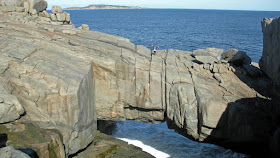
The Margaret River region produces just 3% of the nation’s grapes, but it is responsible for more than 20% of the nation’s premium wines. Although the output is small, the region is large with over 5,500 hectares under vine and over 120 wine producers.
Still a very young industry with the first vines not planted until 1967, the Margaret River wine region has grown to become regarded as potentially one of the great wine-producing regions of the world.
There are many wine tasting tours available. Some popular winery choices include Voyager Estate, Xanadu Estate, Vasse Felix, Evans & Tate, Brookland Valley, Amberley, Driftwood, Leeuwin Estate, Cape Lavender, Wills Domain, Howard Park, Flying Fish, Happs, Wises, Moss Brothers, Bootleg Brewery and Cowaramup Brewery.
For $110 one company will pick you up at your door, take you to all the top wineries, feed you a gourmet lunch and drop you back home at 5pm. I'm not surprised this company has won 5 tourism awards. By the end of the day, going by the photos, the guests look extremely happy, at peace with the world and ready for bed.



















































